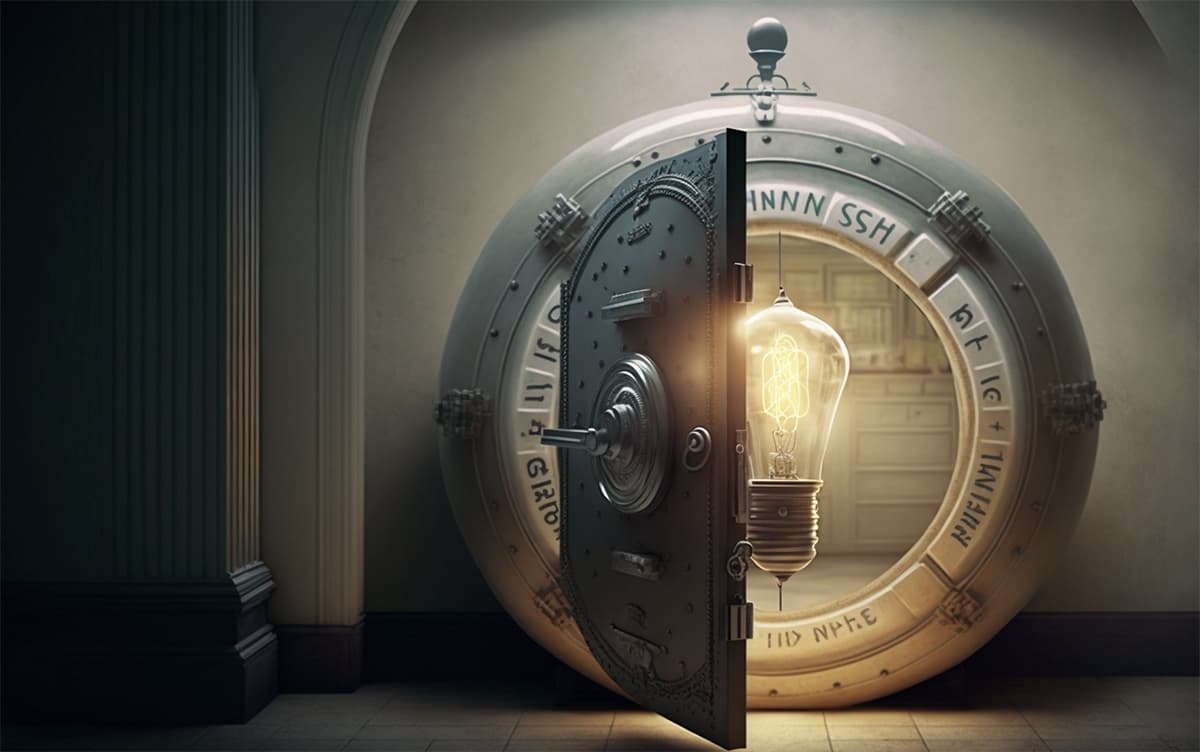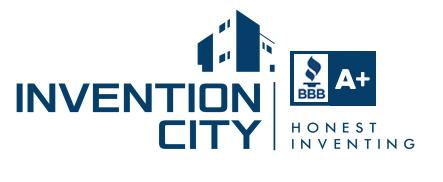How to Talk About Your Invention Before It's Protected.

Be Careful About Relying on a Provisional Patent Application.
An inventor’s greatest fear is often that someone will steal their idea. This fear is justified and is a good and understandable reason to keep an idea secret. With few exceptions, however, an inventor needs help to turn an invention into a product. Secrecy is an impediment to getting help. This is the dilemma: those most useful and capable of giving help may also be those to be most feared. The dilemma begins at the concept stage when an inventor wants to confirm the validity of an idea and continues through distribution when a product is publicly sold.
A detailed disclosure in a provisional patent application can establish a priority date for patenting your invention for a period of one year. However, 1) a provisional application serves only as a reservation and cannot be enforced; 2) at the idea stage an invention is rarely developed enough to have details that could be claimed in a future patent ; and 3) the definition of "invention" excludes information in the public domain. The result is that what actually ends up being claimed as priority in a provisional patent application or covered in an issued patent is much less than most inventors think.
The best way to protect your invention at an early stage is to use all of the tools available to the extent that you can. There are many trade-offs and no perfect solution. But a great strategy to employ throughout your product's life cycle is to disclose information strategically. This might mean never patenting your secret stuff, but instead following the example of Coca Cola and keeping the magic formula in a vault.
How to talk about your invention when it is unprotected:
- Compare it to products that are already on the market. "It's a better mousetrap." Do not say "there's nothing like it." Find something that exists that it can be compared to. "It's like a ____ but better."
- Describe some of the benefits - faster, less expensive, more fun, more effective.
- Use Invention City's Inventicator to score your invention and find talking points.
- The ability to describe what you have while keeping it a secret is very important when you first contact a company and attempt to get them interested enough to sign a Confidentiality Agreement.
An inventor can protect proprietary rights with patents and confidentiality agreements. Often, however, the protected proprietary rights are far less than an inventor would like. The proprietary rights granted in a patent exclude anything obvious or already known in the public domain. The proprietary rights generally acknowledged in a corporate confidentiality agreement are limited by what is known in the public domain along with what may be disclosed by other inventors and what may already be known or in development at the company itself. The exclusion of public domain information also applies to provisional patent applications and patents that issue from them.
The definition of what is in the public domain is unsettling. It is a vague concept that may include not only all of the expired patents in all countries of the world but also all written records available in all of the libraries of the world... and more!
How, short of getting a patent, do inventors know if their idea is really unique and not in the public domain? They do not. Even when a patent has been issued, it can be challenged. An inventor may never really know if a patent is any good until the patent has been tested at great expense in patent litigation.
At this point, the inventor may feel daunted and decide that since the entire body of knowledge of mankind, since the beginning of time, might be considered public domain, then almost any idea can be legally stolen. This is sort of true.
BUT, this stretches a little far. Most patents are respected and challenging a patent is difficult. Respectable companies are not in the business of stealing ideas from inventors. Many companies cherish inventors and place a high value on new ideas, especially marketable ideas that receive patents. (For general information on patents please refer to the article, Protecting Your Invention. For more detailed information please consult with an attorney and refer to the book, Patent It Yourself).
At an invention's early stages, most individuals and companies are too busy with their own plans and ideas to really take the time to steal someone else’s idea - no matter how good - with one, very crucial, exception. If an inventor allows a company or an individual to invest time or money in an idea, then that company or individual will feel certain rights to that idea. Other than having a successful TV product, the surest way to get knocked off is to get deep into a licensing negotiation with a big company and then walk away.
An inventor might therefore be only somewhat careful with disclosure (maintaining special respect for patentability issues) and petrified of investment.
At Invention City we resolve the disclosure dilemma in the following way.
STEP 1 - CONFIRM. Before getting serious we validate the idea by checking prior art, doing an internal survey and running it through the Inventicator. We also consider manufacturing, cost and distribution.
STEP 2 - FILE PROVISIONAL PATENT APPLICATION. We write a detailed specification and together with drawings and images, file a provisional patent application.
STEP 3 - PRESENTATION. We create a presentation that discloses the product's benefits but keeps secret (as much as possible) the critical information about how it achieves the benefits.
STEP 4 - SURVEY (RECONFIRM). Using the presentation, we survey the target market using a platform like Survey Monkey. Good survey data is FANTASTIC for presentations to prospective licensees and investors because it provides real details about the market without revealing details about the invention (we believe that an online survey sent to people privately should not be considered public disclosure, but recognize that our opinion might not hold up in court).
STEP 5 - NDA/CONFIDENTIALITY AGREEMENT. NDAs are not all created equal. At a minimum, a fair NDA will parallel the rights you have with a provisional patent application, the key exception being that the NDA can be enforced immediately. Always look at the enforcement clauses when reviewing a NDA. Consider the venue (where a dispute will be settled) and how a dispute is settled. Arbitration is much less expensive than a full fledged lawsuit. Some NDAs are so bad that you're better off not signing them at all and simply relying upon your provisional patent filing.
STEP 6 - DISCLOSURE. When disclosing your invention to a prospect (or the world) try to keep some critical information secret, even if you've signed a NDA, even if you have a provisional patent application filed... even if you cave an issued patent!
INVENTORS SHOULD BE EXTREMELY CAREFUL ABOUT PUBLIC DISCLOSURE. Public disclosure of an idea can reduce or eliminate proprietary rights and some or all options for patent protection, especially outside of the United States. Definitions of what constitutes public disclosure are not absolute. INVENTORS ARE THEREFORE ADVISED TO CONSULT WITH A PROFESSIONAL ADVISOR BEFORE MAKING ANY DISCLOSURE. Books such as Patent It Yourself (highly recommended) may be helpful.
The issues of disclosure do not fade once a patent has been issued and a product is on the market. If a product is successful it is virtually certain that copies, knockoffs, will appear. Some knockoffs will be in direct violation of patents issued or pending. Others will be more or less legal - even though they may have been inspired by the original, patented, product. Invention City has addressed the issue of direct patent violations by trying to persuade a violating company to change its design so that it is not in violation. This has been successful with some companies when it has been accompanied by an opinion on what, exactly, Invention City considers its patents to cover - THIS TYPE OF DISCLOSURE IS NOT RECOMMENDED UNLESS INFORMED COUNSEL HAS BEEN SOUGHT - SPECIFIC LEGAL RIGHTS MAY BE LOST BY TAKING SUCH ACTION. The value of persuasion is that an expensive court battle and confusion in the marketplace may be avoided. Disclosure of a company’s own opinions on what a patent covers may be a necessary ingredient for persuasion to work.
It is hoped that none of this will dissuade an inventor from moving forward. While the risks are real, so are the rewards. The world market is huge. Even if an inventor does not have the only design for a product, he or she can have a good one and make plenty of money with it.

share this article: facebook